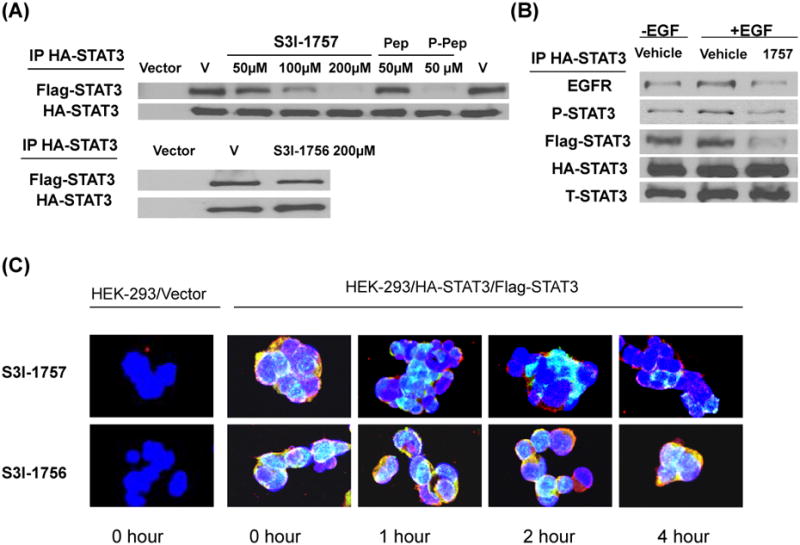Figure 2. S3I-1757 but not S3I-1756 inhibits STAT3-STAT3 dimerization and STAT3-EGFR binding in intact cells.

(A) Co-immuno-precipitation. HEK293 cells stably co-expressing FLAG- and HA-tagged STAT3 were treated with either vehicle, Ac-G{pTYR}LPQTV-AAVLLPVLLAAP-NH2 (phospho-peptide with MTS), Ac-GYLPQTV-AAVLLPVLLAAP-NH2 (non-phospho-peptide with MTS), S3I-1757 or S3I-1756 at the indicated concentration, processed for immuno-precipitation with HA antibody and immuno-blotting with FLAG antibody as described in Methods. FLAG-STAT3 co-immuno-precipitated with HA-STAT3 in HEK293 cells that co-express HA-STAT3 and FLAG-STAT3 but not in vector transfected HEK293 cells. Ac-G{pTYR}LPQTV-AAVLLPVLLAAP-NH2 (phospho-peptide) but not Ac-GYLPQTV-AAVLLPVLLAAP-NH2 inhibited the binding of FLAG-STAT3 to HA-STAT3. S3I-1757 but not S3I-1756 inhibited the binding of FLAG-STAT3 to HA-STAT3. (B) HEK293 cells stably co-expressing FLAG- and HA-tagged STAT3 were treated as described in (A) except that prior to treating with S3I-1757, they were first treated either with vehicle or EGF as described in Methods. The cells were then immuno-precipitated with HA antibody and blotted with antibodies to EGFR, P-Y-705-STAT3, FLAG, HA or total STAT3 as described in Methods. Results are representative of 3 independent experiments. (C) Co-localization. HEK293 cells stably co-expressing FLAG- and HA-tagged STAT3 were plated on cover slides over night and then treated with either vehicle, S3I-1757 or S3I-1756 for 0, 1, 2 or 4 hours and processed for co-localization studies with HA-STAT3 (Green) and FLAG-STAT3 (Red) as described under Methods. DAPI nuclear staining is shown in blue. Data are representative of 3 independent experiments.
